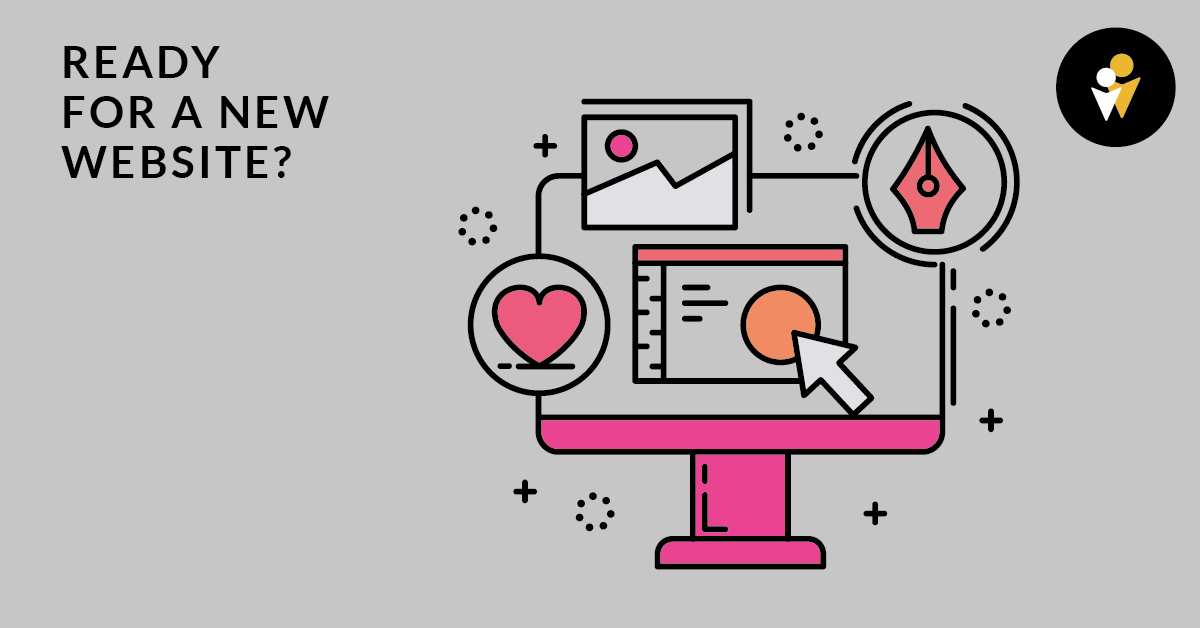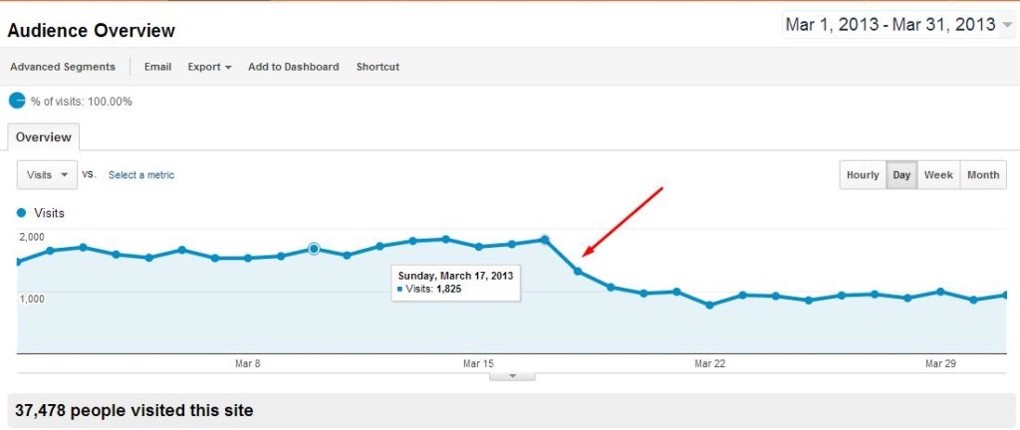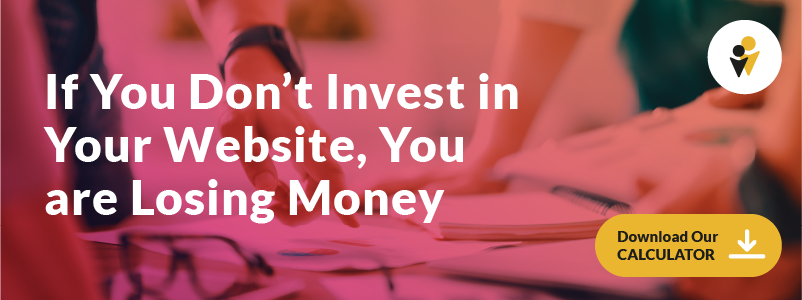Your B2B website was designed maybe two years ago, and you feel it’s time for an overhaul. Perhaps a few of your competitors recently rolled out new websites or are starting to appear in Google search results above your site, and you’re worried your business will be left in the metaphorical dust. If you’ve already started shopping around for a website development company to manage the website building process, you’ve likely seen some beautiful design work. Sure, it’s expensive, but these companies know what they’re doing, right? It all looks very impressive.
 You decide on a website design agency and they promise to deliver an awesome new B2B website in 12 to 18 weeks. Boom! You’re flying high and back in the big leagues, simple as that.
You decide on a website design agency and they promise to deliver an awesome new B2B website in 12 to 18 weeks. Boom! You’re flying high and back in the big leagues, simple as that.
Well, not necessarily.
Unfortunately, it’s never that easy. Let’s take a look at everything that goes into building and launching a new, effective website, as well as why it might be time for you to take a new approach.
What Goes into A Professional Website: The Time Investment
As much as you might like to let the agency make all the decisions here, the website build process usually requires a significant time investment from you and any other decision-makers at your company. No web design agency – or at least none of the good ones – will build the whole website without consulting you.
Website development is a partnership.
First Stage Of Website Design
The first stage is understanding. It’s of critical importance that your website design team fully understands the Mission of your company. What are you trying to accomplish and how will the website be leveraged to help you accomplish it? Ideally, you are working with a website development team that has years of experience to draw upon. Don’t try to use them as a paintbrush. It would be like telling your heart surgeon which artery you want to unclog.
Second Stage of Website Design
Next is content planning. What content on your site will be repurposed, rewritten, or flat-out scrapped? To build a good website, we need good content. We want to make sure our content aligns with your Mission and properly supports it.
Third Stage of Website Design
Then, we start planning and reviewing wireframes, which are visual guides that represent the skeletal framework of your website. This collaborative process ensures you approve of the way your new website will be organized.
Final Stage of Website Design
Once the wireframes are approved, it’s time to put some meat on those bones. You’ll be tasked with approving design mock-ups of the different pages on your website. Even the best designers require feedback and direction, so expect much back and forth before you are happy with the mock-ups.
Finding the Best Website Design Agency
Project management will differ based on the agency you work with. At Pittsburgh Internet Consulting, we leverage Asana and our clients are typically active in the actual project management platform. We like transparency and prefer when our clients are hands-on.
You also need to be involved when it comes to selecting any new website features. Maybe you want to add a live chat, certain animations to pair with icons or buttons, and a library for documents and guides customers might find useful.
With so many decisions to make on your end, 12-18 weeks can speed by. If you’re not careful, indecisiveness can lengthen the website build process by weeks or months.
Our approach for B2B companies looking to really dominate their market is Growth-Driven Design. With Growth-Driven Design, you are working with a website design agency that is constantly looking at and analyzing your website, scoping out the competition, and gathering user data to continually improve your website over time. (More on this further down.)
Why Is a Professional Website Development Agency Important?
To get the best results with your new website, having a professional website dev team is a must. Any good website build process is managed by an Account Director, who acts as a strategist for the entire project.
Your Account Director will be your main point of contact and will ideally have many years of experience managing the launch of successful websites. They’ll be aware of website design trends, best practices, and should even have a deeper understanding of your company’s industry and fully understand your company’s Mission.
The Account Director is responsible for moving the project along to ensure it’s completed within the agreed-upon timeframe. This means acting as the go-between for you and the rest of the website dev team. They’ll work with you to determine what you’re looking for, present you with wireframes and mock-ups, and communicate any necessary information or changes to the dev team.
The Account Director will be working with a team of developers, who will actually be building the new website. Though there are several different roles developers fill, they’re categorized as either frontend developers or backend developers.
Frontend developers focus on building and designing what you see when you visit a website. These developers make use of HTML, CSS, JavaScript, and other coding languages as well as programs like Photoshop. They take your vision for how you want your website to look and actually make it happen. They also focus on creating a smooth and appealing experience for the user.
Backend developers are more behind the scenes. Using the same tools as frontend developers, they ensure that everything on the frontend of the website renders properly on the server-side. These developers typically create the web services and programs used by front-end developers.
All of these developers work together with the Account Director to synthesize the finalized wireframes and mock-ups, resulting in your finished website.
A Tragic Website Launch
In an ideal world, 12 to 18 weeks roll by and you’re left with a very attractive website that everyone assumes will have leads rolling in left and right. Job well done.
Then this happens…
You see a decline in visitors to your website, or maybe your traffic is steady but you’re not getting as many leads as you used to. A new website is supposed to work better, not worse, so what gives?
You have a few different options:
Go back to the web developer
Going back to the website design agency you trusted with the website build process is an obvious option. However, you have to remember that they had you approve wireframes, mock-ups, and you signed off on the completed website before it went live.
It’s hard to complain that they sold you a lemon when they gave you the website you wanted. However, talking to a web design agency is never a bad idea. They should be willing to help you figure out why your website isn’t performing like it should, though you’ll be charged for the time it takes to work through these issues and for any changes that must be made.
Do you really want to give more money to the agency that helped create this debacle in the first place?
Get a new website design firm to look at it
Another option is to go to another firm and have them take a look. This could be an expensive choice, but there are likely some other agencies you considered during your planning process.
Of course, you already passed upon these agencies for some reason, right? Don’t go running into their arms just because it didn’t work out with the firm you chose. Think about why you didn’t pick them in the first place; are they the right choice to help you fix your new website?
Despite there being some widely accepted best practices for website design, no two companies tackle the website build process the exact same way. If you have another firm take a look at your completed website, they’re going to disagree with some of the choices you made. Additionally, they might not work with the CMS you chose.
It’s definitely possible for another firm to help fix your traffic or leads issues, but there’s no guarantee. You could also end up in the same exact place after they give it a whirl. Before going with another website design company, make sure they have experience with fixing these types of issues.
Run an SEO Audit using a professional company
If the website design agency you chose was not following best practices in SEO, you are likely having all kinds of traffic issues. Always make sure your company has some serious experience in search engine optimization. Hiring an SEO company can help evaluate your website to determine its ability to appear in search engine results pages (SERPs).
The downside to an SEO audit is that it could take a while to see results from any implemented changes; your website won’t be fixed overnight. Still, a proper SEO audit can help you see the failings of your website, which can prime you for a return to the traffic and leads you’re used to seeing.
However, it’s not all about keywords, content, and fixing issues behind the scenes. Search engines are getting better at understanding which websites provide a good user experience (UX). If your UX is bad, then your SEO will suffer.
If the SEO company you hired isn’t equipped to fix any UX issues your website is experiencing, you may need to hire a second company. This can get expensive.
Why Not Take the Growth-Driven Design Approach?
Instead of building an entirely new website every few years, why not consider a new approach to website design? With Growth-Driven Design, your website will be built out over time. This allows you to study user behavior and make changes to your website that benefit these users, ensuring that website functionality continuously improves.
This approach starts out with a rapidly deployed foundation: a launchpad site. The goal is to finalize the launchpad site in 30-90 days. This is an actual website that provides all of your company’s core content. No bells and whistles, just the essentials. A minimum viable website. This website is launched and starts to gain exposure in the search engines and reaches your audience.
This launchpad site is:
Safer than traditional website desigs
Traditional website design can be risky not only because of the time commitment but because your budget is spent upfront. If the website isn’t a success, you’ve wasted a lot of time and money. A launchpad site is much safer because it can be completed in 30-90 days and most of your budget is utilized to improve the launch pad on specific growth areas that you know need attention because the data is telling you so.
Fully optimized for search engines
There are a few different strategies that can be employed when building a launchpad site, and all of them have a method for handling SEO. Whether the new site will make use of new content, old content, or a combination, there is a checklist to follow to ensure it is fully optimized for search engines.
At PIC, our approach to website development is, “Do no harm.” While there can be traffic fluctuations with any website deployment, we take extra care in safeguarding important terms and content pieces so we can maintain and improve website visibility.
Launched correctly
Any time you launch a new website, it’s common to move pages around and recategorize some things. These changes often impact the URLs. Redirects help forward traffic from old URLs to new ones, so users don’t see a bunch of “404 Not Found” pages. Error pages are never good for the user experience, so an appropriate redirect is necessary.
Ready to Grow
The most powerful piece of Growth-Driven Design is the growth part. This process builds out your website over time based on observations of user behavior.
Here is an overview of the Growth-Driven Design process:
Building on This Approach
From this point, you can organize a list of features you want* on the site and categorize them by how they will affect your key performance indicators (KPIs). Write a hypothesis for each, explaining how it should affect your KPIs, a priority for each, and real data that is being analyzed on the launchpad site for each.
Rather than being a two-to-three-month love'em and leave'em event, the website development process is a month-to-month partnership between your company and the marketing/design agency. You are working together to optimize conversions and improve user experience through user signals and actual interactions on your website.
* Hallelujah! All the Features I Want!
It is time for a come to Jesus discussion here. I realize I said all the features you want. What I should clarify is, after taking a careful look at user interactions on your website, take what you learned and see how you can adjust it to maximize impact on KPIs. Determine the difficulty in implementing your change and create a prioritized list that you and your developer can use as a tool to improve overall ongoing site performance.
I have to warn you NOT to get hung up on details that will in no way affect the user conversion. If you are at all unsure about something, watch the user behavior and let that dictate your decisions.
Want to talk more about Growth-Driven Design?













